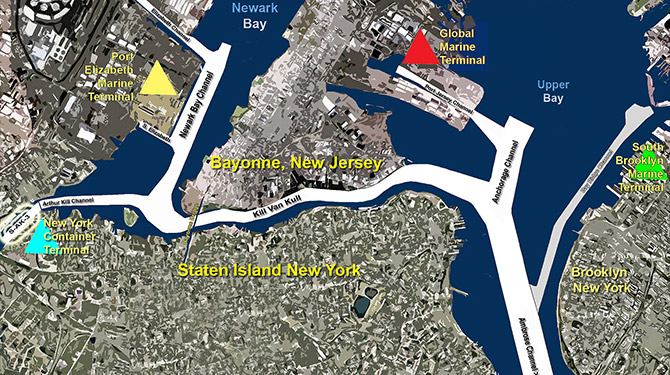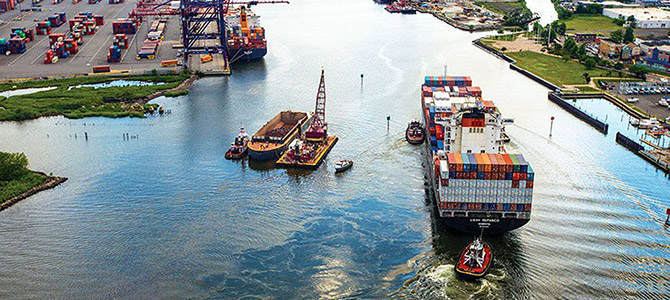The Port of New York and New Jersey is the largest port on the East Coast of North America and the third largest in the U.S. Now, after a $2.1 billion expansion project that spanned nearly 30 years, the port will also be able to accommodate the world's largest cargo vessels. The project, known as the Main Navigation Channel Deepening Program, dredged 38 miles of federal channels to as deep as 50 feet while reusing all 52 million cubic yards of dredged material. It's been a significant win-win for the economy and the environment.
Improving Access
I was fortunate to oversee this massive civil engineering program from 2009 through 2012 while I served as Commander of the New York District of the U.S. Army Corps of Engineers (USACE). Working in partnership with the Port Authority of New York and New Jersey, the USACE was responsible for providing 50-foot water access to the port's container terminals by deepening a network of six channels. The program involved numerous dredging and blasting contracts and the construction of four marsh restoration projects.
Prior to the harbor deepening program, these channels were unable to accommodate Neopanamax containerships, which have a length of up to 1201 feet and a cargo capacity of up to 13,000 twenty-foot equivalent units (TEU). These gargantuan ships, which can carry the equivalent of 6,500 tractor-trailer loads, have been able to pass through the Panama Canal since the completion of the canal's third set of locks earlier this year.
 (Photo by Vince Elias)
(Photo by Vince Elias)
Challenges and Innovations
The harbor deepening program introduced a number of innovations, and addressed many challenges as well. Just after my tenure overseeing the program, with dredging operations in full swing, Superstorm Sandy hit in October 2012. At the time, the USACE was in the midst of constructing a new tunnel to replace two shallow siphons in the Anchorage Channel. The tunnel, which ensures a backup water supply to Staten Island, runs between Brooklyn and Staten Island by the Verrazano-Narrows Bridge. The tunnel was flooded as a result of the storm, and the tunnel boring machine was submerged and damaged. Although delayed, the tunneling was completed in January 2015 after a diligent repair effort by contractors. Completion of this critical component enabled the final dredging of the Anchorage Channel to move forward.
Many innovative measures led to the reuse of dredged material, including silt, sand, clay, and bedrock. Rather than dumping this material into the sea—with a potential detrimental impact to the fishing and tourism industries—the USACE worked with the New York State Department of Environmental Conservation and local environmental groups to devise plans to use the dredge material to restore harbor wetlands, build artificial fishing reefs, and cap landfills and brownfields. All 52 million cubic yards—enough to fill up 13 Empire State buildings—were repurposed for the benefit of the region.
 (Photo by GLDD)
(Photo by GLDD)
A Premier Gateway
The New York metropolitan area is a water-dependent place. There are 500 miles of waterfront in New York City, a key factor in the city's development for centuries and a continued economic driver today. Completion of the deepening program preserves more than 250,000 jobs and ensures that the port will remain competitive in the future.
I've been proud to advocate for the smart, sustainable, and resilient use of New York's waterways for many years now, through the management of the harbor deepening program and my ongoing work as vice chairman of the Waterfront Alliance. With the completion of this major initiative, the Port of New York and New Jersey is well positioned as a premier global gateway that will benefit the regional economy for decades to come.